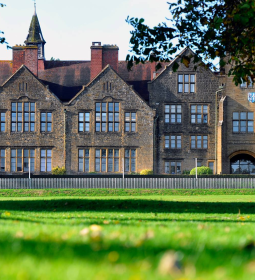The Berlin Zoo is unique - and impresses millions of tourists every year! He managed to collect on his territory the largest variety of animals from around the world. During the trip, you can enjoy the fascinating world of birds, see the hippo house and the popular show of sea lions. The management willingly organizes a fascinating exclusive tour, corporate celebration, and even a children's birthday at the zoo.

History reference
The history of the Berlin Zoo begins back in 1844, but then the institution did not have enough finance and looked very fast until the 1860s, when Heinrich Bodinus became the director. The manager can find large investors, build beautiful pavilions on the territory and erect the famous “elephant gates”.
Thanks to Dr. Ludwig Huck, who took over the leadership in 1888, the zoo fund was replenished with exotic animals, and in 1913 an aquarium was built on the premises of the institution.
During the Second World War, the Berlin Zoo was almost completely destroyed: only 91 animals out of 3,715 inhabitants managed to survive. From 1945 to 1956, under the leadership of Dr. Katharina Heinroth, the zoo was restored from scratch. And since 1956, rare and endangered species began to breed in the institution.
Berlin Zoo today
Today the Berlin Zoo is a paradise for animals! On a vast territory, green lawns are arranged, along which representatives of herbivores freely walk, comfortable aviaries are built where graceful predators live, special pools are equipped, the water in which changes strictly according to the schedule.
For observing animals, special conditions have been created (transparent barriers and large ditches) that allow you to fully enjoy the beauty of the animal world and not disturb the bezelless distance. All buildings of the zoo are designed in such a way that creates the full effect of presence.
An interesting feature of the Berlin Zoo is the special “children's zone”, which houses the youngest of the most harmless inhabitants, who can be touched and fed with milk from a bottle under the supervision of zoo rangers.
In order to fully enjoy the amazing beauty of the Berlin Zoo, it will take at least one day. But the local infrastructure is thought out so that it will not be tiring at all!

The amazing wildlife of the Berlin Zoo
The Berlin Zoo takes the 1st place in the world in terms of the number of inhabitants: today there are about 20,000 animals and birds representing 1,400 species. Taking a walk through the territory of the zoo, divided into special thematic zones, you can see:
- Anoa
- Bantegov
- Hippos
- Bison
- Gaurov
- Mountain goats
- Giraffes
- Roe deer
- Maralov
- Rhinoceros
- Monkeys
- Pandas
- Reindeer
- Elephants.
In comfortable and free enclosures, predators live:
- Polar bear
- Cheetahs
- Lions
- Sea lions
- polar Wolf
- Tigers.
Special pens and glass spheres allow you to observe:
- Australian kookaburra
- Cranes
- Penguins
- Rhinoceros bird and others
In the Berlin Zoo there are such rare species as:
- Watussi Bulls
- Caribbean manatees
- Red pandas.
The local aquarium is the pride of the Berlin Zoo! Located in a separate three-story building, it has a huge coral reef and 250 tanks that hold more than 20,000 liters of water, which will impress even experienced tourists.

Here you can see:
- Amphibian
- Exotic fish
- Seahorses
- Turtles
- Reptile
- Various insects.
However, travelers pay most attention to:
- Huge sharks
- Stingrays
- Dragons
- Crocodiles.
Ticket prices and rules for visiting the zoo
Berlin Zoo is open to visitors from 9 am to 6 pm 7 days a week (exceptions are holidays and force majeure).
Ticket price:
- Adults :
One visit = 15,5 € - 21 €
Annual subscription = 55 € - 99 €
Group visits (from 20 people) = 14.5 € per person.
- Children from 4 to 15 years old:
One visit = 8 € - 10,5 €
Annual subscription = 29 € - 59 €
Group visits (from 20 people) = 7 € per person.
The Berlin Zoo has standard visiting rules:
- You can take pictures, but some inhabitants of the zoo only without a flash, as indicated by special warning signs
- Do not feed and scare animals
- It is forbidden to climb over fences.
Interesting fact
In the 19th century, it was considered fashionable entertainment to host entire families of the Negroid race in cells called ethnographic villages. And the Berlin Zoo, which until the beginning of the 20th century showed sophisticated public people in corrals, was no exception.













